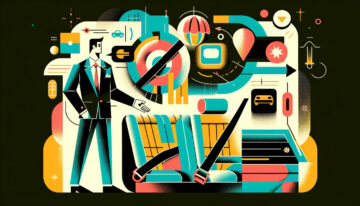Getting back on the road after an auto collision can be nerve-racking. The old saying, “Get back on the horse,” essentially means to try again, and it goes a long way toward helping people get back to doing something they do regularly after something goes wrong so the fear of doing it again doesn’t build up, however sometimes, that isn’t helpful or warranted..
However, it’s crucial to remember that the severity of the accident, your role as a driver or passenger, the injuries you sustained, and the damage to your vehicle can all influence the time it takes to recover. Patience is key in this process, and there’s no need to rush. Your journey back to the road will be unique to you.
With this in mind, what can you do to get back to being a regular road user after being involved in any type of collision?
Sit In The Car
You don’t need to drive or even be on the road in the car; if you are experiencing anxiety with being in the driver’s seat, simply sitting in the seat at first can be a way to help you overcome your worries and get used to being in a car again. If the front seat is too much, sitting in another seat in the vehicle can be helpful just to get over the fear of being in the car. You can focus on being in when it’s moving another time, but at first, just be comfortable being in the vehicle.
Be A Passenger
As a driver, you’re likely not used to not being in control when on the roads, but after a traumatic experience on the road, it can be a good idea to build up to being on the road by not being the driver and letting someone take over that responsibility. Start with short journeys on smaller roads so you can stop the car and get out if required, and then build up to longer journeys and different roads and speeds until you feel more comfortable being driven.
Drive on Quiet Roads
Don’t rush things and drive on roads you don’t feel confident on simply to get back behind the wheel and drive again. Take it easy, stick to quieter roads that are easy to navigate, such as residential streets or rural roads, to help you build up your confidence behind the wheel again and give you the ability to stop and pull over when you need to.
Get A Passenger
In the aftermath of an accident, you might need to get used to driving on your own. When you’re getting back on the road, it can be a good idea to take someone with you you trust who can also drive to support you as you get used to driving again, especially if it’s been a while or you sustained massive injuries. Having another person there who can drive and understands the road can give you moral and practical support, and they can also take over if you feel you can’t drive on your own if you have issues in certain areas.
Therapy
Not all injuries are visible after a car accident, and it might be that you are struggling with PTSD as a result of the accident or you develop driving anxiety when you didn’t have this before.
Talking to a therapist can help you work through your triggers and get you the support you need to overcome whatever is blocking you from driving again. You don’t need to rush things, but you also don’t need to ignore something serious if it’s impacting your life. Overcoming emotional trauma is just as important as recovering from physical injuries.
Get Closure
What is classed as closure will be something only you can decide. And for many people, it’s sometimes the way they think it will or what they expect it to be. But if you feel this is a barrier to your recovery, it’s worth exploring. It could be that you need to face the driver who caused your injury in court and see them held accountable for their actions that day. This can provide a sense of justice and closure. It might be that talking to a truck accident attorney is what you need if you are involved in a collision with a truck. Or you might need to visit the scene of the accident and process what happened to you and allow yourself time to come to terms and grieve for what you went through so you can begin to heal.



